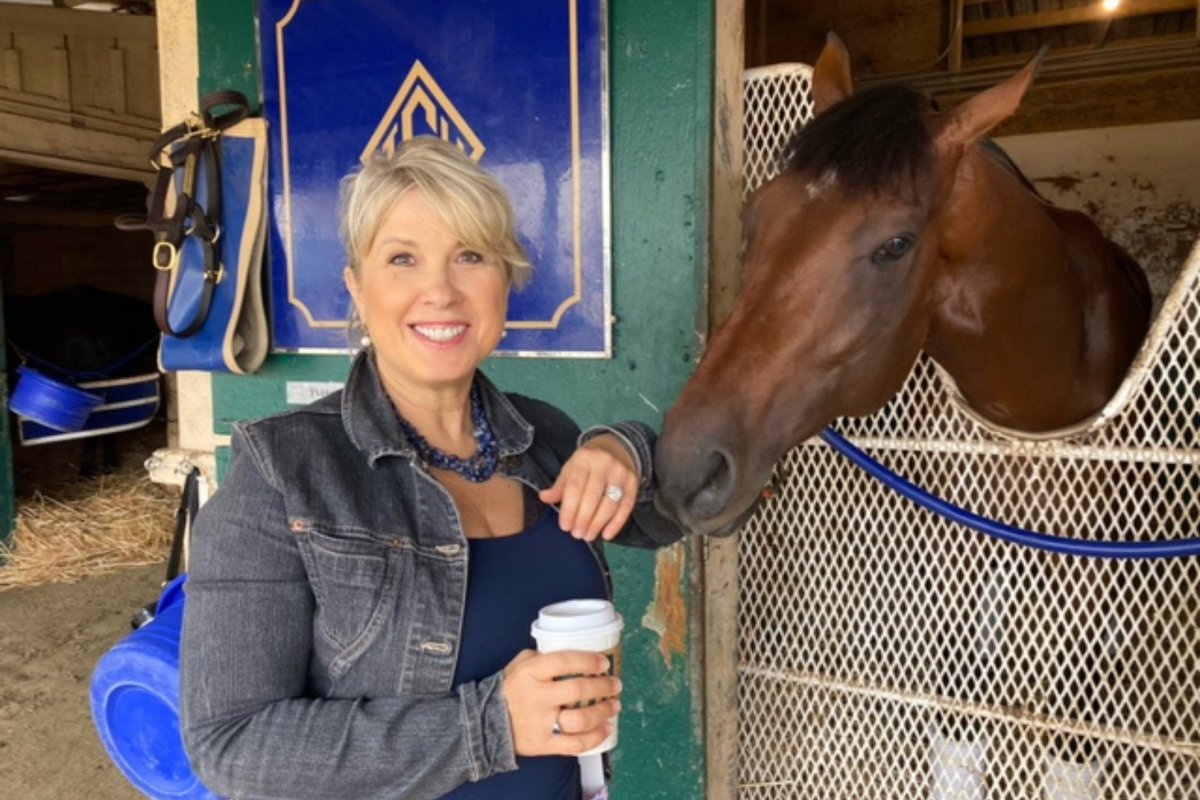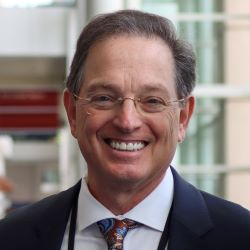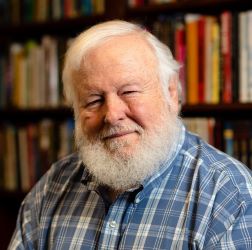Discover the Transformative Power of Stories in TMS Therapy.
Explore the compelling power of personal stories at FACTMS, where we showcase the remarkable journeys of individuals touched by Transcranial Magnetic Stimulation (TMS) therapy. These narratives not only provide hope and inspiration but also illustrate the profound impact TMS has on lives. Here, you can delve into firsthand accounts, learn from experiences, and see the real-world effectiveness of TMS therapy. Join us to stay connected and be inspired by the power of real stories in the world of TMS.
Chase, Patient Advocate: A New Lease on Life
“I’m living an extraordinary life for someone diagnosed with deep depression.”
Before the COVID-19 pandemic, Chase Elkins was what one might call your “typical” teen. She was an avid soccer player and a vivacious, passionate daughter, sister, and friend. But as the pandemic shut down the world and forced people to stay home, Chase lost her zest for life and became severely depressed. “I became depressed because of the intense loneliness that a lot of us felt from being cut off from our social networks. It was also the sudden stop of regular, rigorous exercise and the difficulties many families faced with being so cooped up with each other,” she says. “It was challenging having the whole family together, being isolated, and no one able to go out and do their own thing.”
Read Full Story Here
Chase Elkins: A New Lease on Life Thanks to SAINT™
“I’m living an extraordinary life for someone diagnosed with deep depression.”

Before the COVID-19 pandemic, Chase Elkins was what one might call your “typical” teen. She was an avid soccer player and a vivacious, passionate daughter, sister, and friend. But as the pandemic shut down the world and forced people to stay home, Chase lost her zest for life and became severely depressed. “I became depressed because of the intense loneliness that a lot of us felt from being cut off from our social networks. It was also the sudden stop of regular, rigorous exercise and the difficulties many families faced with being so cooped up with each other,” she says. “It was challenging having the whole family together, being isolated, and no one able to go out and do their own thing.”
During the pandemic, Chase was diagnosed with major depressive disorder (MDD) and anorexia nervosa. Later in the pandemic, she was diagnosed with anxiety. She took medications and attended therapy sessions, but she didn’t improve.
Chase says her experience is reflective of many people, especially adolescents. According to the World Health Organization, the pandemic triggered a 25% increase in the prevalence of depression and anxiety worldwide.1 Despite many new antidepressant medications entering the market in recent decades, the drugs alone didn’t work for her, she says.
Chase’s medications would get changed constantly. “Whether it’s genetics or just how your brain works, conventional treatments like medication and talk therapy were not enough for me. I’m so happy that we discovered this advanced treatment. It’s called SAINT™ therapy.”
Chase’s mom, Cindy, learned about a clinical trial conducted by Dr. Nolan Williams, an Associate professor within the Department of Psychiatry and Behavioral Sciences at Stanford University and the director of the Stanford Brain Stimulation Lab. She had Chase and the family read the trial results, so she could understand the treatment and learn about the possible side effects.
Chase received SAINT treatment in 2022. She explains she was told SAINT is “a short treatment where it would tap your brain, and that it didn’t hurt very much.” She recalls the first treatment days being very long. She didn’t feel a huge difference after the first day of treatment, but after five days of treatment, she regained her gregarious nature. “I had barely been able to hang out with my twin sister before SAINT. Afterward, I had the motivation and desire to spend time with my friends. I hadn’t felt a desire or the energy to hang out with another person in such a long time. I was shocked and surprised in a good way. I had improved so quickly.”
Chase takes the same medication as when she was treated with SAINT, and she plans to continue taking it. She hasn’t had any follow-up SAINT treatments, but she knows the option is available if needed. She maintains her mental health just like anyone striving for a good life balance would. She exercises at the gym, meditates, and spends time outside when she can. “I live a fairly normal life now, but I’m living an extraordinary life for someone diagnosed with deep depression. I’m just happy to be able to go about my life without having this incredible pressure that my family and I used to carry.”
The universality of her experience—not only with the fact that the medications didn’t work sufficiently for her, but the fact that a lot of people experienced what she did, especially during the pandemic—has made Chase committed to raising awareness in the general public about the efficacy of SAINT as a viable treatment option for major depression. “I was very lucky to have found something that worked so well for me, and I would like to get the word out about that,” she says. “Just being able to have SAINT more accessible to the general population would be amazing.” She promotes SAINT, along with treatments for other mental illnesses she’s dealt with, by talking to people she knows, by being an information resource for people who reach out to her, and through her involvement, along with her mom, with the Foundation for the Advancement of Clinical TMS (FACTMS).

Her family’s intimate involvement in her life, her care, and her well-being have proven to be vital. “Mental illness isn’t talked about enough,” she says. “Parents need to realize how common depression is. Your child may not get depression, but they may. You need to be able to tell what the signs are, just as most parents will learn about the signs for drugs or alcohol use,” she says, adding that parents need to pay attention and discern whether their child is distant because they’re a teenager or are they going through something that parents need to be prepared for.
Currently, in her second year at Boston University, Chase plans to study psychology premed and attend medical school after university. From an early age, she knew she wanted to help people. “Once I understood the inner workings of depression and how it affects family, friends, and community, and at the same time, as I learned about new, advanced treatment options for depression, I realized I wanted to pursue a career that helps to improve lives for people suffering from mental health conditions.”
“Wherever the forefront of the treatments is, that’s where I want to be. I believe it is neuromodulation therapy, which is why we’re so involved with the FACTMS. While I further my education, I might also find some new treatments that I can devote my time to.”
- World Health Organization. COVID-19 pandemic triggers 25 percent increase in prevalence of anxiety and depression worldwide. March 2, 2022.
Diana Daniele: I Had Crippling Depression—Until I Tried a New Treatment
My heart thumped wildly as the doctor reclined my chair, dipping my head back while raising my feet. He was outside my field of vision, as my head and eyes were set dead ahead, courtesy of a long metal arm with a magnetic plate at the end of it, which he had attached snugly against my scalp. I was about to undergo a novel and emerging treatment for severe mental illness, called Transcranial Magnetic Stimulation (TMS).
“You’ll feel a pulsing where the magnet is and a corresponding tapping sound,” the doctor said. “Are you ready?”
I suppose my answer would have been just the same if he’d asked, “How desperate are you to be cured of your depression and anxiety?”
“I will do whatever it takes,” I said.
Read Full Story Here
I Had Crippling Depression—Until I Tried a New Treatment
My heart thumped wildly as the doctor reclined my chair, dipping my head back while raising my feet. He was outside my field of vision, as my head and eyes were set dead ahead, courtesy of a long metal arm with a magnetic plate at the end of it, which he had attached snugly against my scalp. I was about to undergo a novel and emerging treatment for severe mental illness, called Transcranial Magnetic Stimulation (TMS).
“You’ll feel a pulsing where the magnet is and a corresponding tapping sound,” the doctor said. “Are you ready?”
I suppose my answer would have been just the same if he’d asked, “How desperate are you to be cured of your depression and anxiety?”
“I will do whatever it takes,” I said.
I had despaired of ever escaping the deep, lonely, cylindrical death spiral I’d inhabited for the past four years. “Isolating” is the psychological term. Sure, I was still physically living with my husband and two young children in our home in L.A., but I was virtually unreachable on anything more than a surface level.

In the first year of my depression and anxiety, I’d lost my self-esteem and self-confidence, with my self-reliance not far behind; I dreaded going anywhere, especially alone. As the years passed with no real alleviation of my symptoms, I slipped into a deeper state of voluble self-loathing. I would have thoughts like: You have caused your own depression, by not meditating properly or exercising enough or eating mindfully. You lack character traits like courage, resilience, and strength to heal yourself. You are a revoltingly weak, worthless loser and you deserve this.
My mind was so loud, whirring with self-accusations and negative self-talk, that it was hard for me to speak over it. My husband noticed, but as my depression deepened, it became harder for him to reach me.
I attempted to negate the vicious thoughts inside my head by spending a month confined to a recovery house perched atop a Malibu cliff, to no avail. Later, my psychiatrist recommended a highly-regarded outpatient program at UCLA Medical Center. As a Phi Beta Kappa graduate of UCLA, where I was also a sorority girl, I hoped I might find healing at my beloved alma mater. I did find both purpose and camaraderie, attending the program. It gave me something to get out of bed for, and I enjoyed getting to know my fellow program participants, whose struggles mirrored my own.
Midway through the program, in a moment of insanity—or, arguably, sanity—I’d confessed to my social worker that I’d been lying on the Beck’s Depression Inventory she gave me at our weekly check-ins. I actually did have suicidal ideations, and they were growing by the day.
She responded by marching me over to the Admissions Department at the Ronald Reagan Neuropsychiatric Hospital, which was conveniently just one building over. At the door of the inpatient psych ward, with its flashing light, security code and chain-linked padlock, I panicked. What had I done? I clutched my social worker like a scared toddler who doesn’t want her mother to leave her at preschool. She carefully peeled my fingers off her arm and reminded me that I could leave as soon as I felt better, because I was a “voluntary admit.”
My team of doctors at UCLA pronounced me treatment-resistant. I agreed, since it didn’t seem to matter what kind of antidepressant or antipsychotic I was prescribed or how many therapy sessions I attended. I was not getting any better. My attending physician urgently recommended electroconvulsive therapy or ECT, commonly known as shock therapy, to get me out of what he labeled an “almost psychotic state.” I did, indeed, undergo the invasive ECT treatments. Sadly, I experienced no relief in my symptoms.
It turns out, I was not alone in being treatment-resistant. One in five Americans suffers with mental illness, and up to 30 percent of those don’t respond to the first line of treatment: antidepressants and psychotherapy.
About six months later, a dear friend told me she had secured an appointment for me with her psychiatrist, who had helped cure her postpartum depression. While I highly doubted that her psychiatrist could help me—coming, as he did, after a rather lengthy list of qualified medical professionals who’d already tried—I neither wanted to let my caring friend down, nor give up on myself.
My husband accompanied me to Dr. Sparago’s office for the appointment and sat with me during his comprehensive review of the many meds I had been prescribed over the past few years. We both heard him mumble something about how I “seemed a candidate” and the words “new treatment option.” Our eyes met on the couch. Hoping.
Dr. Sparago stood up and asked us to come with him to see the treatment room. It was small and windowless, with a reclining dental chair at its center. He leaned over and grabbed a brochure off a lucite holder and showed us what looked like a “Just Say No” ad. Two brains were pictured side-by-side, one dark with muted gray and blue blotches, the other one lit up with gold, red, and green. I expected the caption to say “This is your brain. This is your brain on drugs,” but instead it said, “Normal brain” and “Depressed brain.” The normal brain had lights on, like a cozy house after dark with people inside, while the depressed brain was gray, muted, and without light. Without hope.
I felt my thoughts drifting into their usual dark place and appreciated Dr. Sparago touching me on the shoulder, which brought me back to the present moment. He was explaining how TMS worked.
“TMS was approved in the U.S. in 2008 for use in treatment-resistant patients, like you,” Dr. Sparago explained. “TMS uses a pulsed magnetic field—similar to that used in an MRI—to create an electrical current in the surface of the brain, which will reset your body’s mood regulation system.” Think of how turning your smartphone off and then restarting it will often “fix” a problem.
By the following Monday, I was able to confirm insurance coverage and begin the TMS protocol, which called for half-hour sessions five days a week for six weeks between October and November, 2018.
TMS did not hurt. But the tapping is fairly loud and rhythmic, and always followed by a time of silence. There was a TV to watch Netflix, positioned at eye level, which helped pass the time. I was also warned that I might get a slight headache after treatment, but I did not experience that.
While some TMS patients report a marked change in mood in just one week, my recovery came about more gradually. I had been living in almost complete emotional darkness, but as the days and then weeks of TMS went by, I began to see rays of light peeking in.
Soon, I found myself singing to my little girl as we played, making my son’s favorite apple pie to celebrate his flag football victory, and looking forward to the time I could spend with my loving husband. As the new year approached, I continued to embrace life by reconnecting with friends and relaunching my PR consulting business.
Almost four years after I started treatment, I still do TMS once a month, to maintain my incredible progress. The psychiatrist suggested the maintenance as an option, but only if I wanted to. I know a woman who did TMS for her post-partum depression. She does not do maintenance and is still fine. But I will keep doing it monthly. It doesn’t hurt, there are no side effects, and it only takes about 20 minutes. Insurance does not pay for maintenance, however, and I realize that I am privileged to be in a situation where I can afford to pay $75 per month for treatment.
I feel like my old self again—only better. Because I now know that mental health is rooted in the physical: in brain chemistry and circuitry. It was not my fault; it had never been my fault. And with depression the world’s leading cause of disability, that knowledge is almost as vital as the cure.
Diana Daniele is a writer and publicist living in California. She is currently working on a memoir. To find out more please go to: dianadanieleauthor.com
All views expressed in this article are the author’s own.
Cindy Elkins: TMS Gave Me My Daughter Back!
Cindy Elkins is a champion of transcranial magnetic stimulation (TMS)—and SAINT™ treatment specifically—as a treatment for major depression that should be widely available.
Her ardent desire and passion stem from her own experience as a parent watching her daughter spiral into major depression.
“Chase’s depression was pretty all-consuming and took her from us for a bit. It was a completely foreign place for all of us. We felt helpless. We felt frustrated. We couldn’t believe that this invisible illness had just hijacked Chase,” Cindy recalls. “The more I learned about depression, the more my partner and I had to realize that who we were speaking to was the depression, and every now and then, we would see Chase again. It was the hardest thing we’ve been through in our lives, bar none.”
Read Full Story Here
Cindy Elkins: How SAINT Gave One Parent Back Her Daughter
The power of ‘Team Chase’

Cindy Elkins is a champion of transcranial magnetic stimulation (TMS)—and SAINT™ treatment specifically—as a treatment for major depression that should be widely available.
Her ardent desire and passion stem from her own experience as a parent watching her daughter spiral into major depression.
“Chase’s depression was pretty all-consuming and took her from us for a bit. It was a completely foreign place for all of us. We felt helpless. We felt frustrated. We couldn’t believe that this invisible illness had just hijacked Chase,” Cindy recalls. “The more I learned about depression, the more my partner and I had to realize that who we were speaking to was the depression, and every now and then, we would see Chase again. It was the hardest thing we’ve been through in our lives, bar none.”
It was a precarious time, Cindy recalls, because youth mental health was declining rapidly during the pandemic, and it was hard to access mental health professionals. According to the World Health Organization, the pandemic triggered a 25 percent increase in the prevalence of depression and anxiety worldwide.1
Cindy organized a team of healthcare professionals—dubbed “Team Chase,” to oversee her daughter’s care. “We’re sporty, team people. That’s how I, my partner, and our girls grew up—we realized the power of a team is so much greater than what an individual can do,” Cindy explains. She also wanted to assemble an “all-star” team to tackle Chase’s health issues. “I knew that if I could find the best, I could help us work together better. I sent weekly status updates to Team Chase. And her healthcare providers were super responsive. They liked working together and having that more frequent communication outside of the clinic because there were so many aspects to Chase’s journey.”
Cindy learned about SAINT through her research. She read the initial clinical trial and then shared it with her family, including Chase. Ultimately, Chase decided for herself to try the treatment. It was a decision her parents felt was Chase’s to make because it’s her brain, and she was the one who would be impacted directly by the treatment. “If she had declined it, I would’ve advocated pretty hard for it. But she’s very analytical, and I knew that if she could read the results from the double-blinded randomized controlled trial, it would speak for itself,” says Cindy.
Chase’s response to the SAINT treatment was quicker than her family expected and could have dreamed of. “We kept seeing parts of Chase come back to us a little bit at a time.” In a story featured on the Today Show, Chase’s twin sister Christel had remarked that after the treatment, she saw her sister again.2

Parents, family members, and friends struggle alongside their loved ones who struggle with depression. Often, they don’t know how to help, nor are they aware of all the treatment options available – either FDA-approved or in trials. Cindy’s professional background helped her to research and find resources, but she admits that she, too, learned a lot through the experience. She shares how family-based therapy proved to be enlightening. “Chase had an outstanding therapist who was able to work with our family in a really important way, and she also worked a lot with me,” she says. As a natural fighter, leader and organizer, Cindy initially thought she could help Chase through her depression by working harder. “I needed to change, and I thought all my life skills would make this better, but it turns out I needed new skills.” The change, she acknowledges, was to surrender what wasn’t serving her and not give up, but to let go. Cindy and Chase are both passionate about sharing their story. “Everybody’s got to talk about this out loud to everyone they know. Back in the day, nobody would’ve shared anything inside their family, much less outside of their family. Chase is amazing at sharing her story. And I’m sharing the story as well,” says Cindy. “As parents, we’ve got to be more aware of what our kids are going through. As helpless as I felt, I knew Chase being in her room all day sleeping was not normal. Whether your kids are talking to you or not, pay attention.”
Both Chase and Cindy participated in the Centers for Medicare and Medicaid Services’ (CMS) open comment period about SAINT because they want this treatment to be accessible to everyone who needs it. Cindy is on the Board of the Foundation for the Clinical Advancement of TMS, and Chase joins her on the FACTMS Patient Advocacy Group along with other patients and TMS leaders. “I’m thrilled that SAINT is getting a spotlight,” she says. “Chase and I believe, given all of the time spent trying antidepressants that can have terrible side effects, Why Not TMS – it’s fast, very minimal side effects and the relief from depression is lasting.”
- World Health Organization. COVID-19 pandemic triggers 25 percent increase in prevalence of anxiety and depression worldwide. March 2, 2022.
- NBC News. Magnetic therapy brings hope to people with depression. NBC News Today, July 7, 2022.







